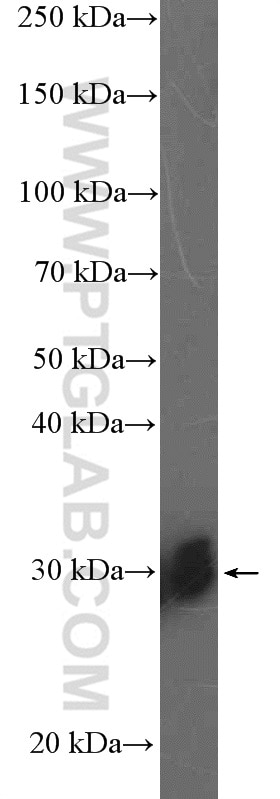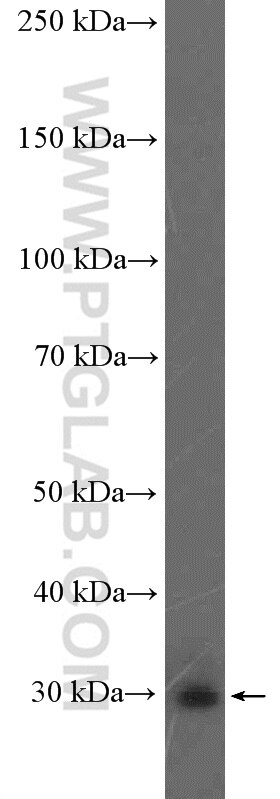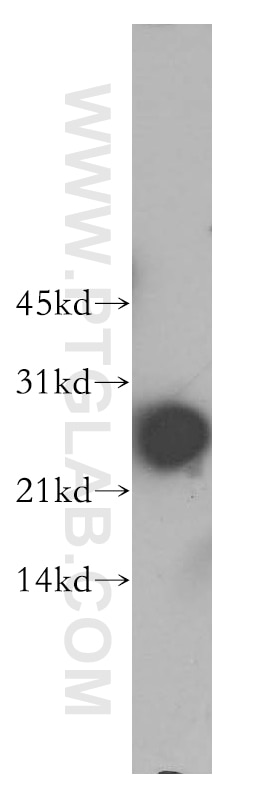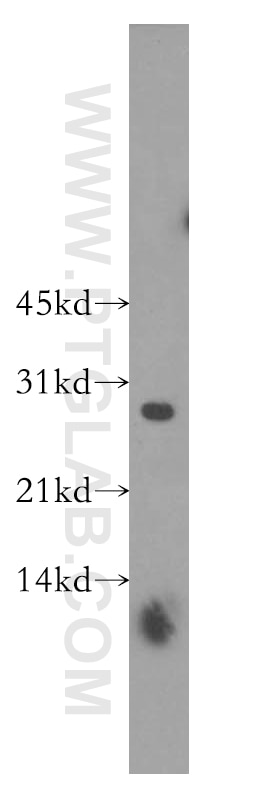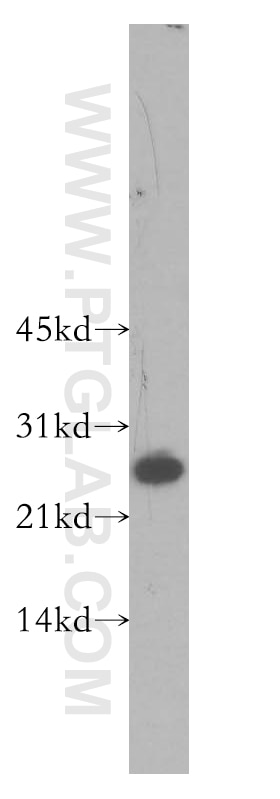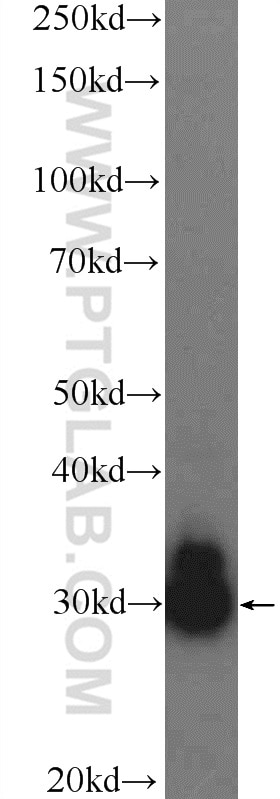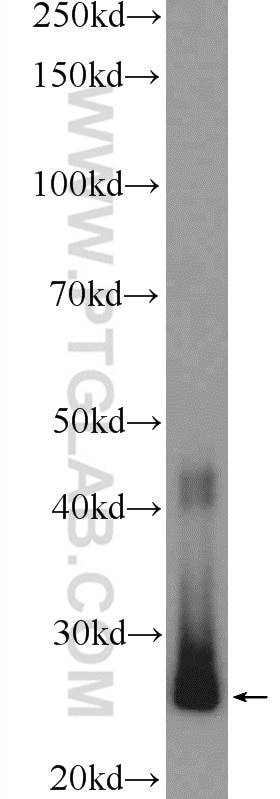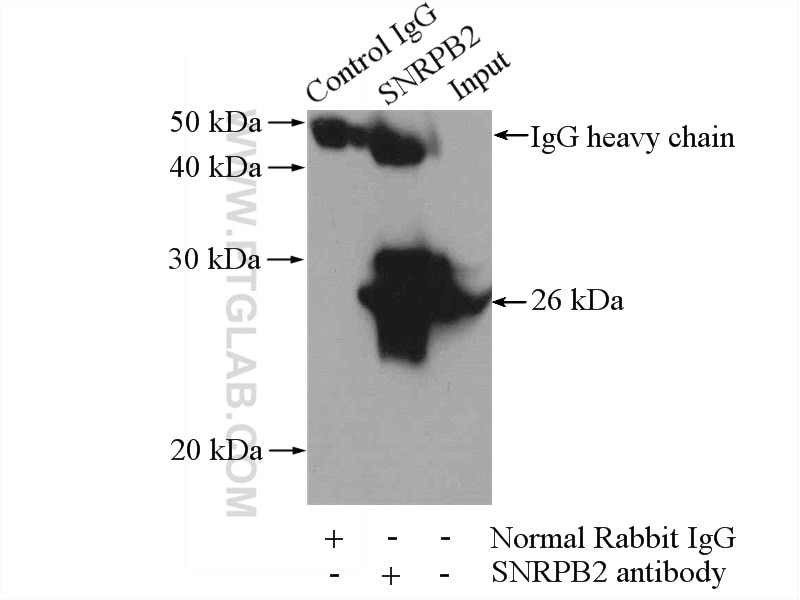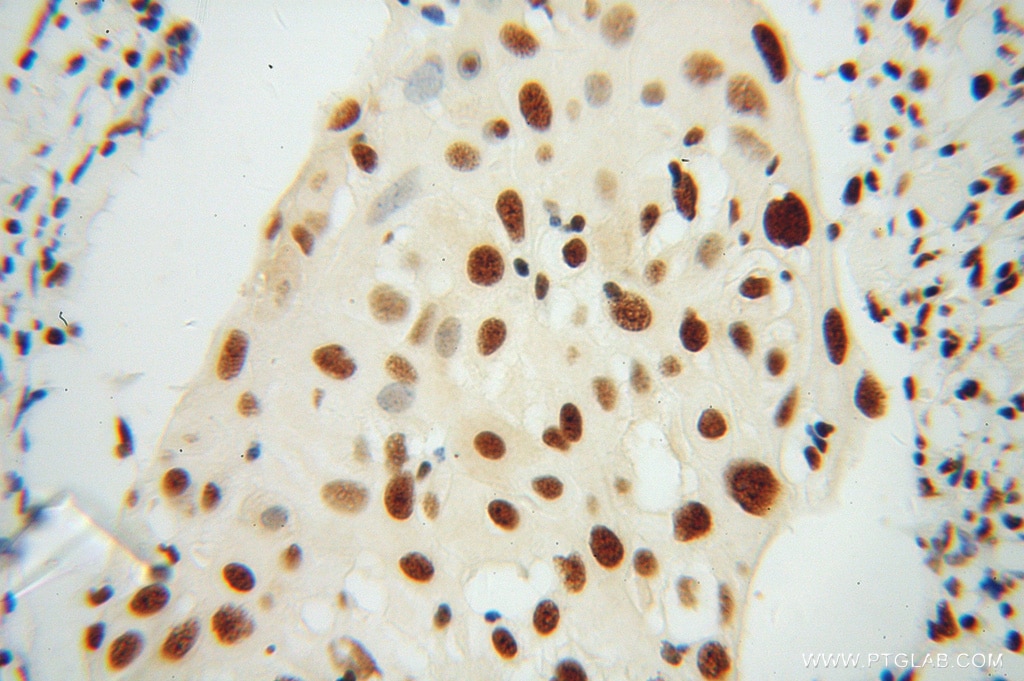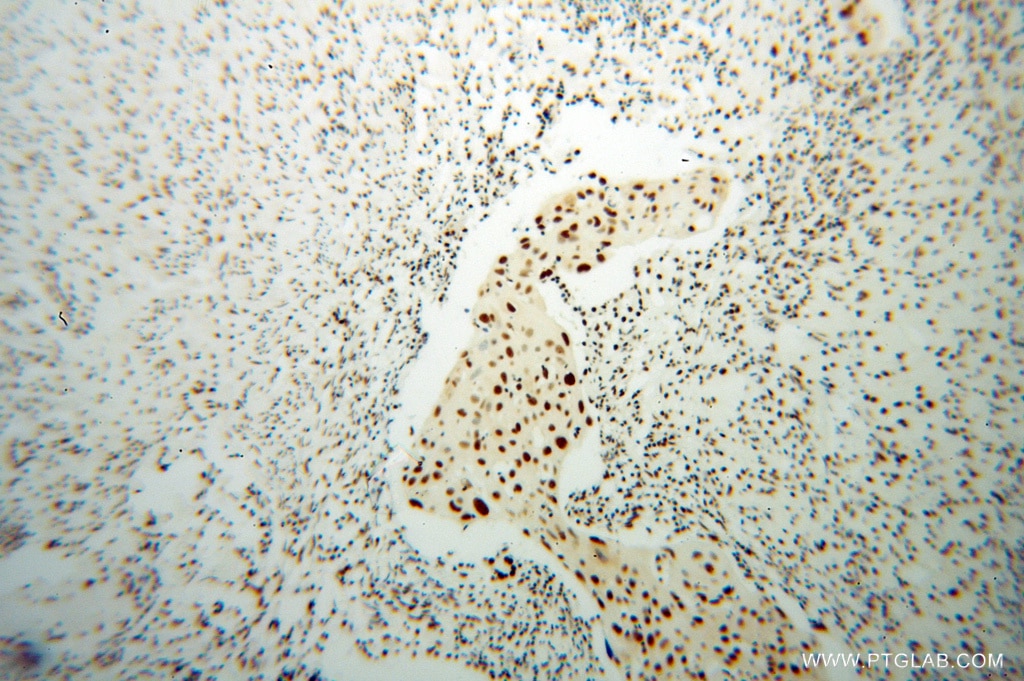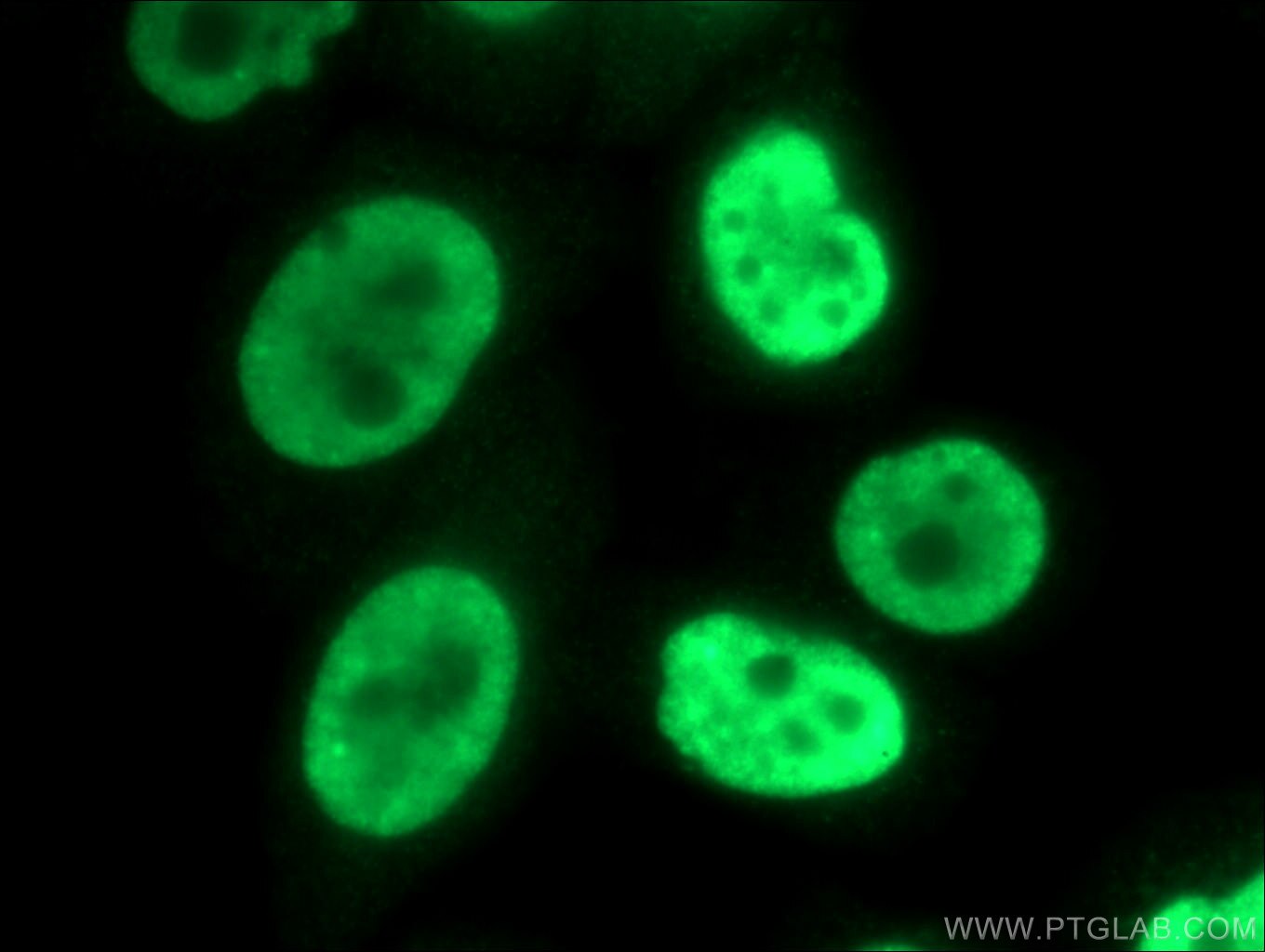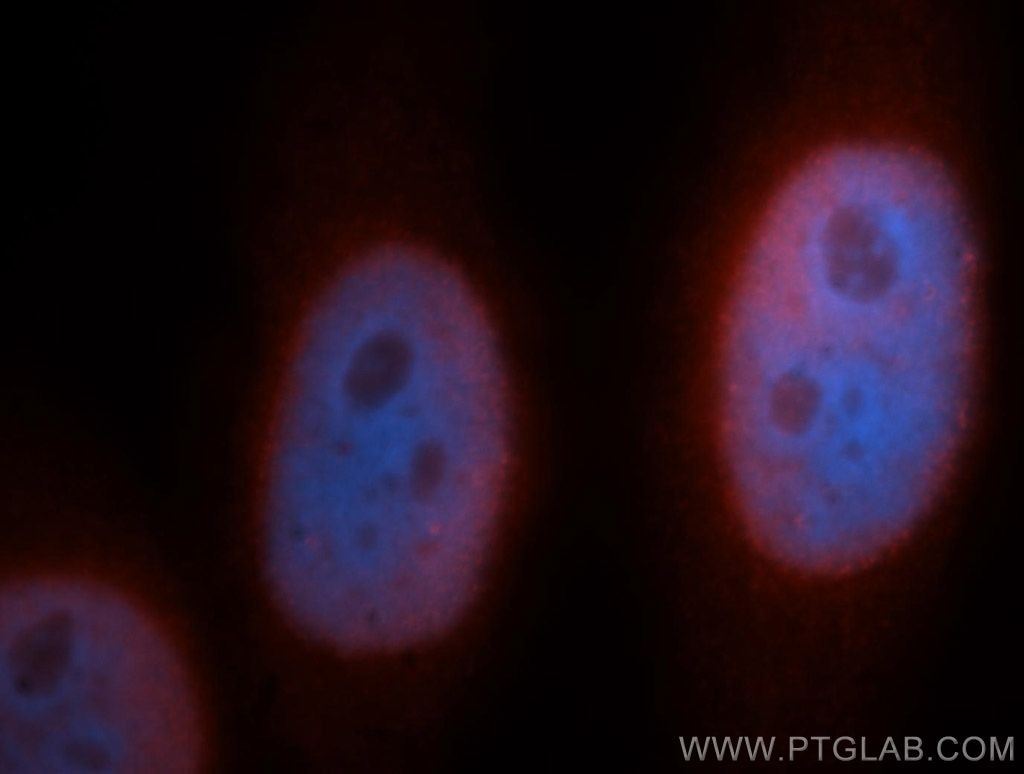Anticorps Polyclonal de lapin anti-SNRPB2
SNRPB2 Polyclonal Antibody for WB, IP, IF, IHC, ELISA
Hôte / Isotype
Lapin / IgG
Réactivité testée
Humain, rat, souris
Applications
WB, IHC, IF/ICC, IP, ELISA
Conjugaison
Non conjugué
N° de cat : 13512-1-AP
Synonymes
Galerie de données de validation
Applications testées
| Résultats positifs en WB | cellules HeLa, tissu cérébral humain, tissu hépatique de souris, tissu hépatique humain, tissu pulmonaire de souris, tissu rénal humain |
| Résultats positifs en IP | tissu hépatique de souris |
| Résultats positifs en IHC | tissu de cancer du col de l'utérus humain il est suggéré de démasquer l'antigène avec un tampon de TE buffer pH 9.0; (*) À défaut, 'le démasquage de l'antigène peut être 'effectué avec un tampon citrate pH 6,0. |
| Résultats positifs en IF/ICC | cellules HeLa |
Dilution recommandée
| Application | Dilution |
|---|---|
| Western Blot (WB) | WB : 1:1000-1:4000 |
| Immunoprécipitation (IP) | IP : 0.5-4.0 ug for 1.0-3.0 mg of total protein lysate |
| Immunohistochimie (IHC) | IHC : 1:20-1:200 |
| Immunofluorescence (IF)/ICC | IF/ICC : 1:50-1:500 |
| It is recommended that this reagent should be titrated in each testing system to obtain optimal results. | |
| Sample-dependent, check data in validation data gallery | |
Applications publiées
| WB | See 6 publications below |
| IHC | See 1 publications below |
| IF | See 1 publications below |
| IP | See 1 publications below |
Informations sur le produit
13512-1-AP cible SNRPB2 dans les applications de WB, IHC, IF/ICC, IP, ELISA et montre une réactivité avec des échantillons Humain, rat, souris
| Réactivité | Humain, rat, souris |
| Réactivité citée | Humain |
| Hôte / Isotype | Lapin / IgG |
| Clonalité | Polyclonal |
| Type | Anticorps |
| Immunogène | SNRPB2 Protéine recombinante Ag4436 |
| Nom complet | small nuclear ribonucleoprotein polypeptide B'' |
| Masse moléculaire calculée | 225 aa, 26, 5 kDa |
| Poids moléculaire observé | 25-31 kDa |
| Numéro d’acquisition GenBank | BC036737 |
| Symbole du gène | SNRPB2 |
| Identification du gène (NCBI) | 6629 |
| Conjugaison | Non conjugué |
| Forme | Liquide |
| Méthode de purification | Purification par affinité contre l'antigène |
| Tampon de stockage | PBS avec azoture de sodium à 0,02 % et glycérol à 50 % pH 7,3 |
| Conditions de stockage | Stocker à -20°C. Stable pendant un an après l'expédition. L'aliquotage n'est pas nécessaire pour le stockage à -20oC Les 20ul contiennent 0,1% de BSA. |
Informations générales
U2 small nuclear ribonucleoprotein B''(SNRPB2) is part of the U2 RNP particle, which associated with the branch point of the lariat-shaped intron, in intermediate in the cascade of mRNA precursor splicing event. Only in presence of the U2A' protein, SNRPB2 binds stem loop IV of U2 snRNA.
Protocole
| Product Specific Protocols | |
|---|---|
| WB protocol for SNRPB2 antibody 13512-1-AP | Download protocol |
| IHC protocol for SNRPB2 antibody 13512-1-AP | Download protocol |
| IF protocol for SNRPB2 antibody 13512-1-AP | Download protocol |
| IP protocol for SNRPB2 antibody 13512-1-AP | Download protocol |
| Standard Protocols | |
|---|---|
| Click here to view our Standard Protocols |
Publications
| Species | Application | Title |
|---|---|---|
Sci Transl Med Comment on "Drug screening for ALS using patient-specific induced pluripotent stem cells". | ||
Sci Transl Med Drug screening for ALS using patient-specific induced pluripotent stem cells. | ||
Nucleic Acids Res Stoichiometries of U2AF35, U2AF65 and U2 snRNP reveal new early spliceosome assembly pathways. | ||
Cell Chem Biol Novel RNA-Affinity Proteogenomics Dissects Tumor Heterogeneity for Revealing Personalized Markers in Precision Prognosis of Cancer. | ||
STAR Protoc Protocol for proteogenomic dissection of intronic splicing enhancer interactome for prediction of individualized cancer prognosis. |
Avis
The reviews below have been submitted by verified Proteintech customers who received an incentive forproviding their feedback.
FH Melissa (Verified Customer) (03-16-2020) | This antibody works incredibly robust in western blot analysis. However, we do observe a non-specific band in all of our blots which we have attributed to snRPA due to the size and sequence similarity of the immunogen.
|
FH John (Verified Customer) (12-06-2018) |
 |
